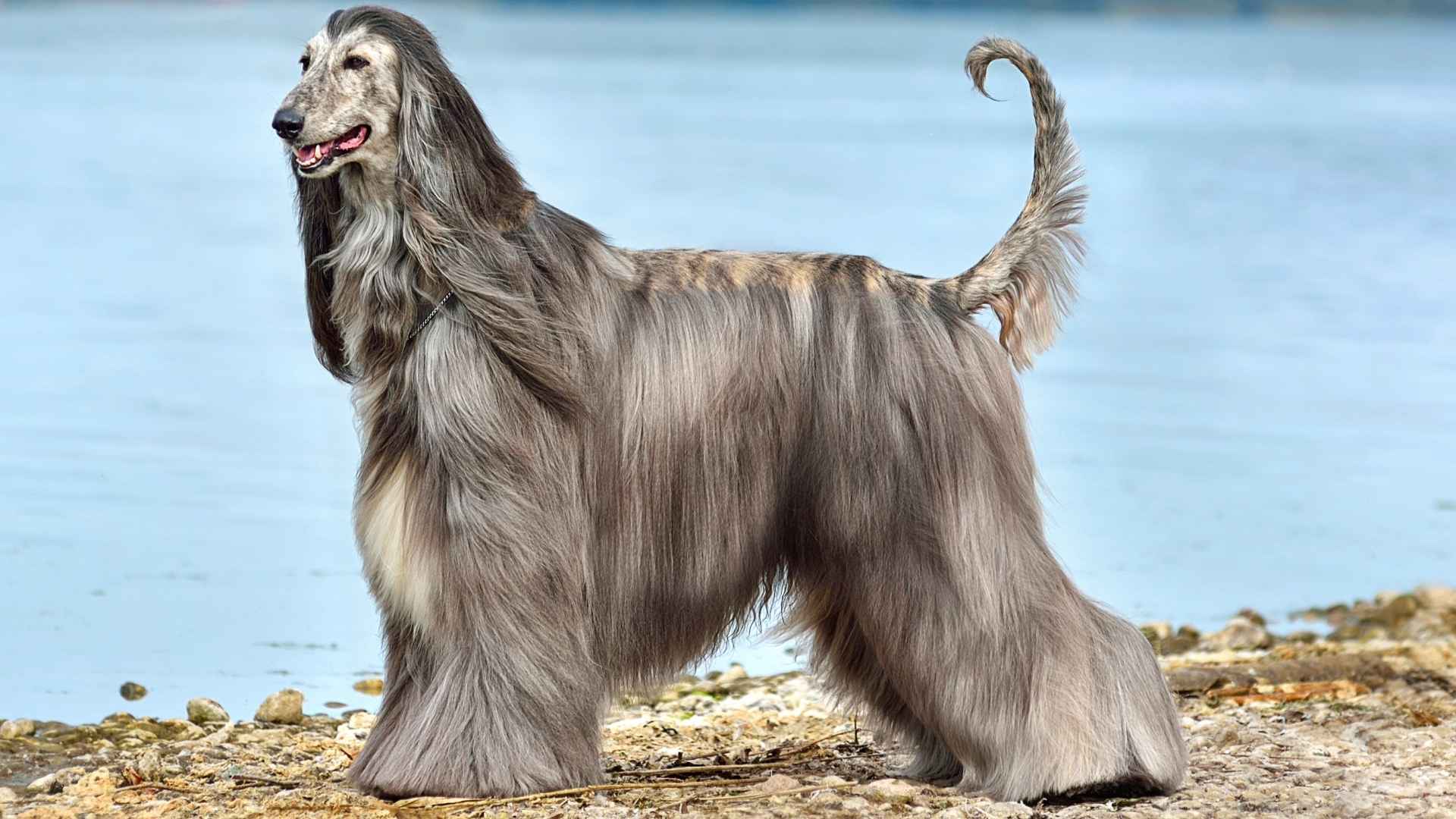If you adore big dogs but can’t stop sneezing around them, you’re not alone. For many allergy sufferers, the joy of having a loyal, larger-than-life companion often clashes with the reality of itchy eyes, runny noses, and constant shedding. Thankfully, not all dogs trigger allergies the same way. That’s where hypoallergenic large dog breeds come in, offering the best of both worlds: size and sniffle-free snuggles.
While no dog is 100% allergy-proof, some breeds produce fewer allergens or shed less dander and hair, making them far more manageable for sensitive individuals. Many of these breeds also feature coats that trap hair and skin flakes rather than releasing them into your home or car. So if you’ve been swapping out dog seat covers or vacuuming constantly just to cope, switching to a hypoallergenic breed might be your game-changer.
In this article, we’ve rounded up the top large dog breeds that are known for being more allergy-friendly. Whether you’re seeking a gentle giant or an energetic outdoor buddy, there’s a big hypoallergenic dog out there that just might be the perfect fit.
Hypoallergenic Large Dog Breeds
1. Giant Schnauzer
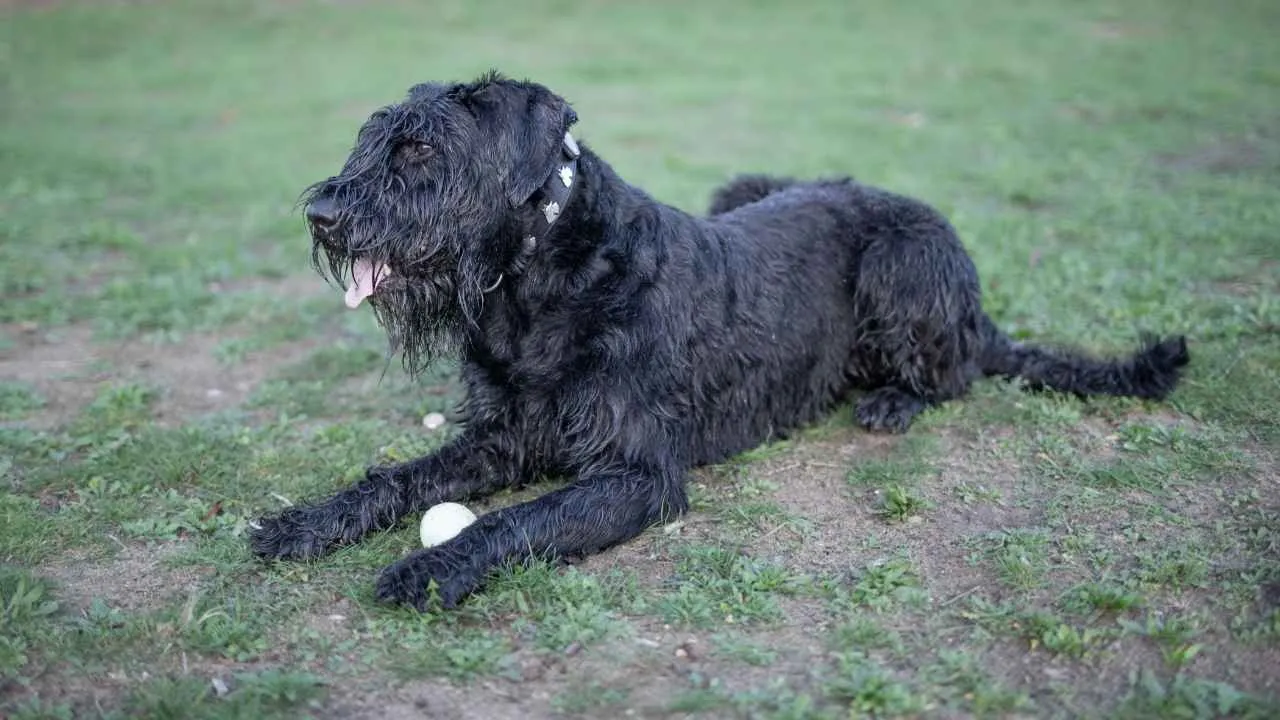
With roots in Germany’s Bavarian Alps, the Giant Schnauzer, sometimes called the Riesenschnauzer, is the largest of the three Schnauzer types. Bred by crossing Standard Schnauzers with breeds like Great Danes and Bouvier des Flandres, these powerful dogs were originally developed to drive cattle and guard breweries and butcher shops.
Standing 23.5 to 28.5 inches tall and weighing up to 85 pounds, their robust, square-built frames are covered in a dense, wiry coat that makes them remarkably weather-resistant and ideal for allergy sufferers. WebMD mentions that Giant Schnauzers are affectionate dogs who enjoy attention and are deeply loyal companions.
Care Needs
Giant Schnauzers require a disciplined grooming routine to maintain their coarse outer coat and woolly undercoat. Regular brushing, at least twice weekly, is essential to prevent matting and manage dander. Their distinctive facial furnishings also need frequent trimming to stay clean.
These dogs benefit from professional grooming every 4–6 weeks. Despite their low shedding nature, they’re high-maintenance in terms of coat care. Additionally, due to their working-dog energy and intelligence, they thrive with consistent training, daily exercise, and mental engagement.
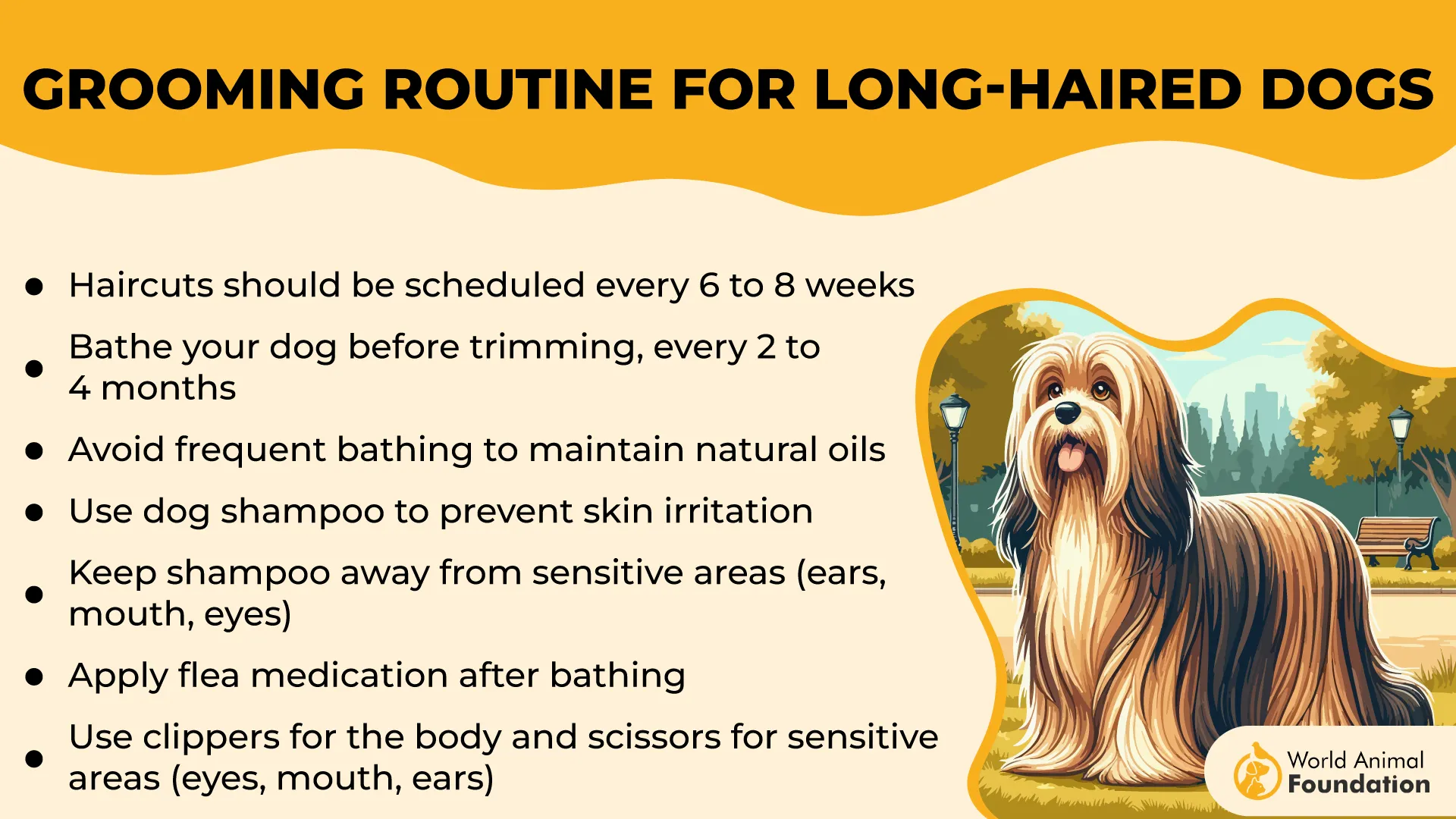
Fact: The Giant Schnauzer has a long history as a service and police dog in Germany, valued for its strength, loyalty, and intelligence.
2. Afghan Hound
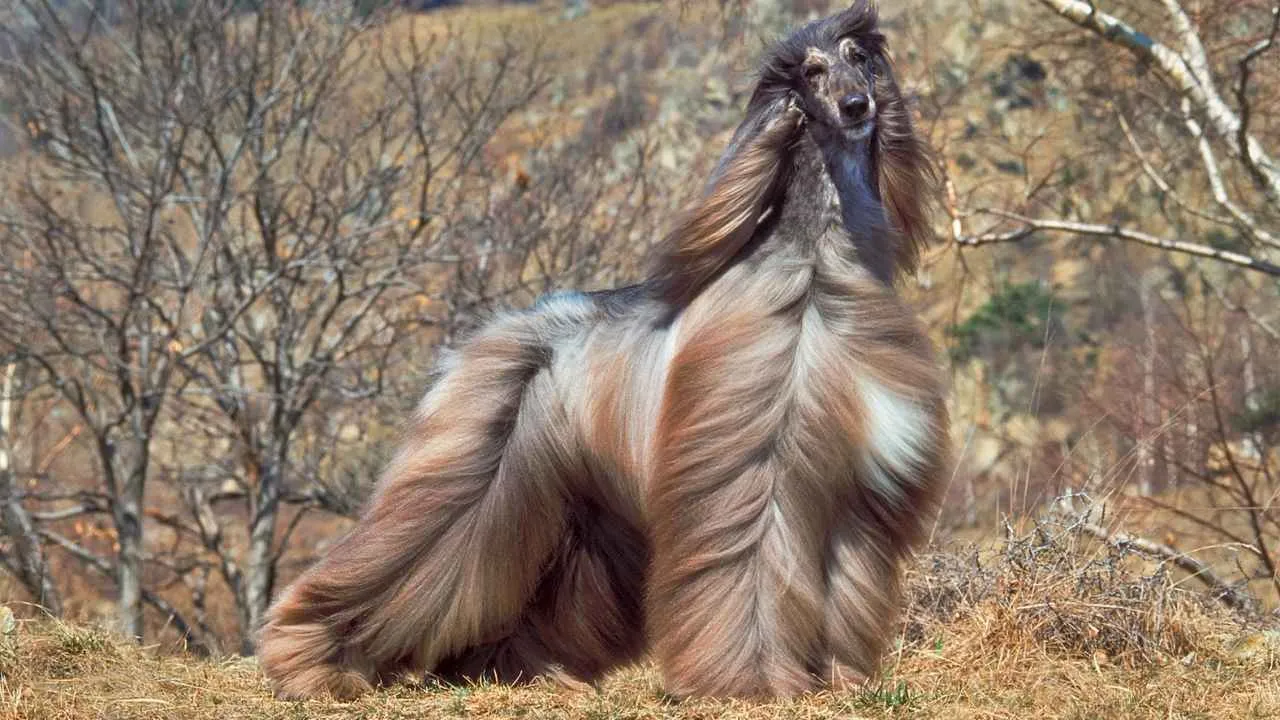
Graceful and dignified, the Afghan Hound is a striking large dog breed originally bred in the rugged terrain of Afghanistan. Revered for its long, flowing coat and aristocratic appearance, this breed stands between 25 to 27 inches tall and weighs around 50 to 60 pounds.
Often considered hypoallergenic due to its minimal shedding, the Afghan Hound features a silky coat that comes in a variety of colors and a characteristic ringed tail carried proudly.
Historically, this hound was used to pursue agile game like gazelles and leopards, relying on its powerful stride and keen eyesight. With an independent nature and elegant stature, the Afghan Hound commands attention in any setting.
Care Needs
Afghan Hounds are highly energetic and require ample exercise, ideally more than two hours daily, to support their mental and physical health, as per PDSA. Despite its luxurious appearance, the Afghan Hound requires consistent grooming to maintain its fine, thick coat.
Regular brushing, ideally daily or several hours weekly, is essential to prevent matting and tangles. Weekly baths, along with conditioning, are also recommended to keep the coat in prime condition.
Though grooming is a commitment, the breed’s minimal shedding qualifies it as a suitable option for allergy-sensitive owners. For lower-maintenance care, many opt for a shorter “puppy cut.” Notably, Afghan Hounds can be challenging to train due to their clever, independent temperament.
Fact: The breed was once used to hunt leopards in its native Afghanistan due to its speed and agility.
3. Bouvier Des Flandres
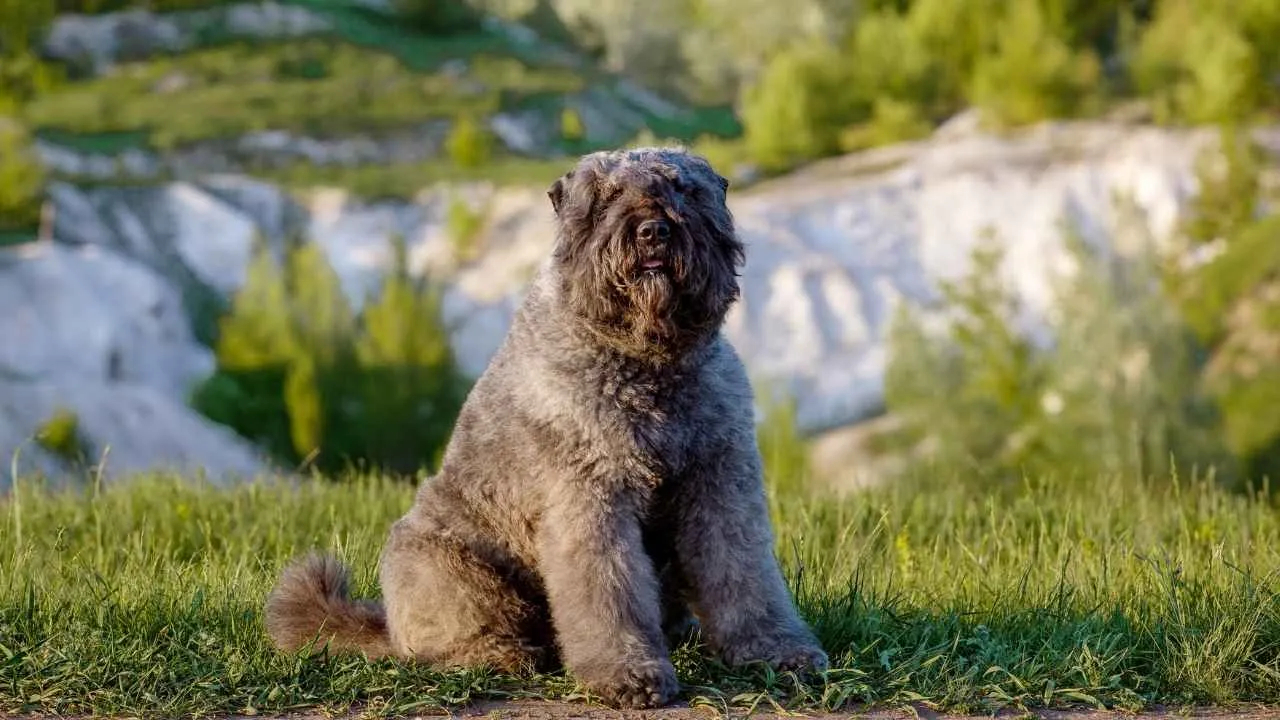
With roots in the farmlands of southwestern Flanders and northern France, the Bouvier Des Flandres, also called Vlaamse Koehond, Flanders Cattle Dog, or Koe Hond, is a rugged and hardworking breed known for its loyalty and strength.
Originally bred to herd cattle, pull carts, and serve in war efforts, this breed is marked by a compact, powerful build and a tousled, weather-resistant coat. Bouviers stand 23.5 to 27.5 inches tall and can weigh around 88 pounds.
Their signature features include a flouncy tail, heavy eyebrows, and a “dirty beard” that adds to their endearing charm. Though not overly demonstrative, these devoted dogs show love through companionship and diligence. PetMD reports that Bouviers are loving and devoted to their families, and they are typically gentle and tolerant with young children.
Care Needs
Bouviers are low shedders, making them suitable for allergy sufferers. Their thick, wiry coat traps dander, which can be managed with regular grooming. Weekly brushing, occasional bathing, and coat trimming help maintain hygiene and reduce allergens.
Their high energy levels demand at least two hours of physical and mental exercise daily. Without stimulation, they may develop destructive behaviors like chewing and barking. Proper grooming and active routines are key to keeping this intelligent breed healthy and hypoallergenic.
Fun Fact: Bouviers once served as ambulance dogs and messengers during World War I.
4. Airedale Terrier
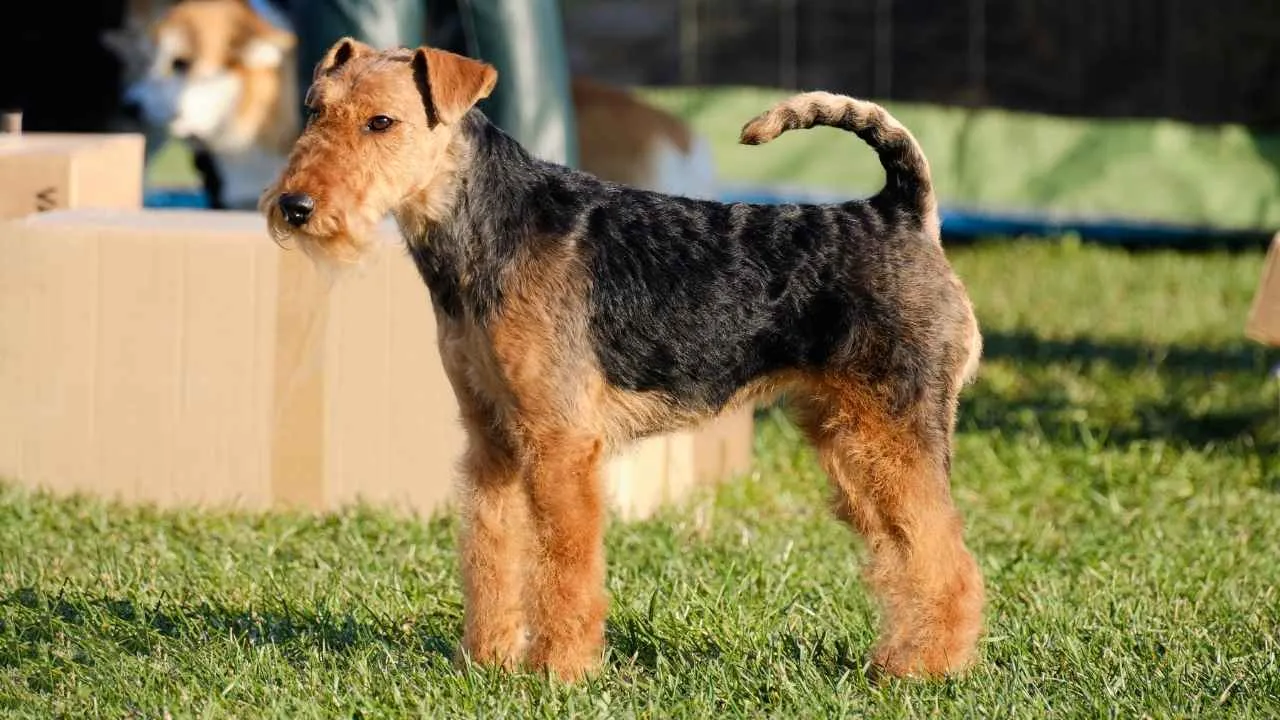
Known as the “King of Terriers,” the Airedale Terrier is the largest terrier breed, standing between 22–23 inches tall and weighing 40–50 pounds. Originating in the Aire Valley of Yorkshire, England, the Airedale was initially bred to hunt small game and later gained fame as a wartime messenger and search dog.
These dogs boast a boxy build, expressive dark eyes, and a dense, wiry black-and-tan coat often seen in a saddle pattern. Airedales are intelligent, loyal, and bold, ideal companions for active households.
Care Needs
Although Airedale Terriers are considered hypoallergenic due to their low-shedding, wiry coats, they still produce some pet dander and require consistent grooming. Their medium-length fur should be brushed several times a week to prevent matting and minimize allergens.
Monthly trimming and occasional stripping of the coat help maintain its texture and appearance. Regular health checkups are essential, as Airedales are prone to breed-specific conditions. Owners should also monitor dental hygiene, ear cleanliness, and exercise routines to ensure optimal health.
Did you know? Airedale Terriers served valiantly during World War I and World War II, delivering messages and locating wounded soldiers on the battlefield.
5. Bergamasco Shepherd
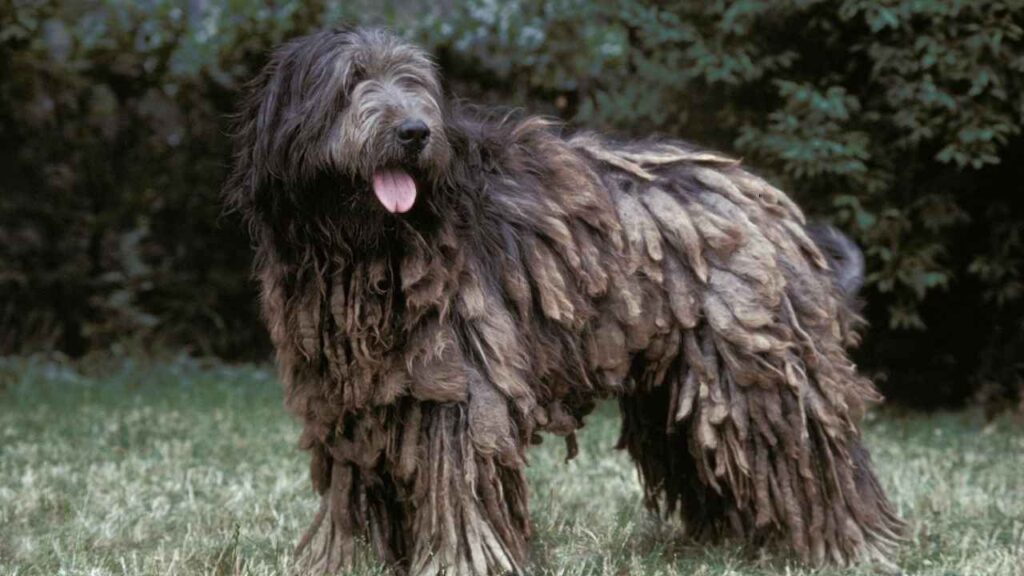
The Bergamasco Shepherd, also known simply as the Bergamasco, is a striking and ancient herding breed that hails from the Italian Alps near Bergamo. With its iconic coat made up of three distinct hair types that form natural flocks (mats), this breed was developed to withstand extreme mountain climates while herding livestock.
Adults typically stand between 22 and 24 inches tall and weigh around 55 to 85 pounds. Known for its intelligence, loyalty, and calm demeanor, the Bergamasco is deeply bonded to its human family and does best in a home environment, not in isolation with livestock. While they may appear rugged and aloof, these dogs are affectionate and devoted to those they trust.
Care Needs
Despite the complex look of its coat, the Bergamasco is surprisingly low-maintenance. Their flocks develop naturally and should not be brushed out. Owners must assist with separating the mats once during puppyhood, but after that, minimal grooming is needed.
Occasional bathing is sufficient, and their unique coat helps reduce shedding, making them more hypoallergenic than many other large breeds. They thrive on nutritious meals and regular exercise. These dogs are not physically mature until about age two, when their growth plates fully close.
Fact: Bergamascos are known for their devotion and often reward owners with unmatched loyalty and affection.
6. Irish Water Spaniel
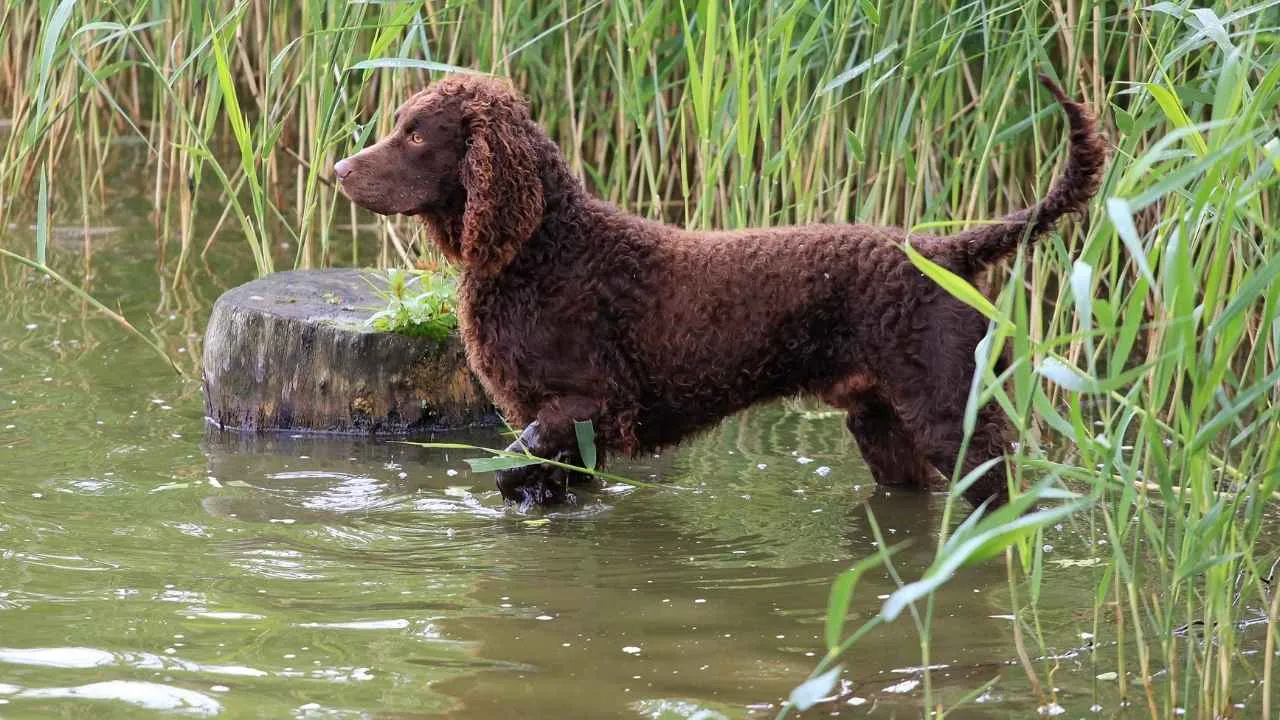
Bred for stamina and aquatic agility, the Irish Water Spaniel, sometimes affectionately known as the “Clown of the Spaniel Family”, is a rare but impressive sporting breed. Originating in Ireland in the 1830s, this hypoallergenic retriever stands between 21 to 24 inches tall and weighs 45 to 65 pounds.
Its most distinguishing feature is its dense, liver-colored curly coat, which is water-repellent and topped by a unique topknot of loose curls that fall gracefully over the ears. Other trademarks include a smooth face, a tapered “rat tail,” and a powerful build.
This breed’s webbed feet and muscular frame make it a natural swimmer, originally developed to retrieve waterfowl from cold, marshy environments.
Care Needs
The Irish Water Spaniel’s tight, curly coat needs routine grooming to prevent matting. Brushing several times a week and occasional trimming help maintain its distinctive appearance. While it doesn’t shed excessively, regular coat maintenance is crucial for both comfort and cleanliness.
Because of its love for water and retrieving, this breed thrives with daily exercise and mental stimulation. Baths should be given as needed, especially after outdoor adventures.
Fun Fact: The Irish Water Spaniel was one of the earliest breeds recognized by the American Kennel Club, registered in 1878.
7. Samoyed
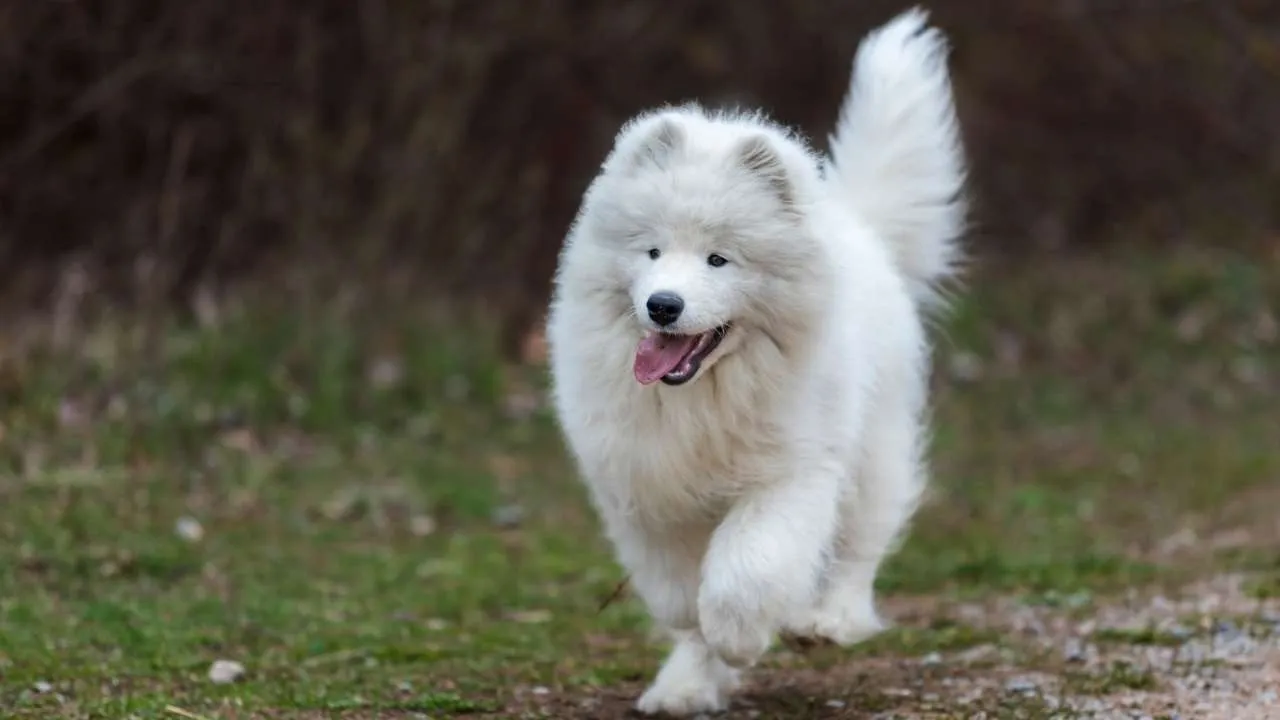
Known affectionately as the “Sammy,” the Samoyed is a striking working dog breed originating from Siberia. Developed by the Nenets people, these dogs were used for herding reindeer, pulling sleds, and offering warm companionship in subzero temperatures.
With a height ranging from 19 to 23.5 inches and a weight between 35 to 65 pounds, Samoyeds are medium to large dogs with powerful builds and distinct features such as erect ears, dark almond-shaped eyes, and a signature “Sammy smile.”
Their luxurious, double-layered white coats offer insulation and repel dirt, earning them the nickname “Teflon dogs.” Though often categorized as hypoallergenic due to their low dander levels, they are not non-shedding, so exposure is advised for allergy-prone individuals.
Care Needs
The Samoyed’s thick double coat requires regular grooming to maintain its cleanliness and prevent matting. Weekly brushing is a must, with increased frequency during seasonal shedding. While their coat repels dirt, they should still be bathed every few months or when particularly dirty.
Their ears should be checked regularly, nails trimmed monthly, and dental hygiene maintained consistently. This hypoallergenic dog breed is energetic and thrives on daily exercise to prevent boredom and maintain mental wellness.
Fun Fact: The Samoyed’s upward-curved lips prevent drool from freezing in arctic temperatures.
Conclusion
Finding the right companion for households dealing with dog allergies can be challenging, but thankfully, several large hypoallergenic dogs tend to make it easier for allergy-prone families to enjoy canine companionship. While no breed is entirely free of allergens, some dogs like the Portuguese Water Dog and the Soft Coated Wheaten Terrier have coats and dander levels that minimize allergic reactions. These breeds are intelligent, energetic, and loving, making them perfect partners for families that need a dog hypoallergenic enough to coexist with pet allergies.
Whether you’re considering a loyal Giant Schnauzer or a playful Samoyed, it’s important to spend time around the breed before bringing one home to gauge personal sensitivity. Each dog is unique, and reactions can vary. Don’t forget, managing pet allergies is just as much about grooming routines and household cleanliness as it is about breed choice. With informed decisions, families can experience the joy of dog ownership without constant allergic reactions interfering.


